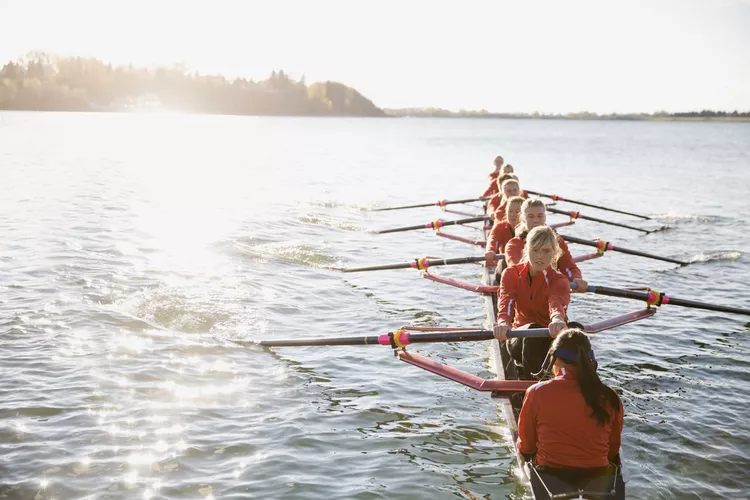Many people unfamiliar with water sports may think rowing and paddling are the same activities. Misusing the terms could lead individuals to say “rowing a canoe” or mistakenly refer to the paddle as an oar. However, significant differences exist between rowing and canoeing/kayaking beyond just terminologies.
There are some similarities: in both rowing and paddling, participants sit in a narrow vessel propelled by their hands pulling and pushing a blade through the water. Canoes, kayaks, and rowing boats can all be utilized solo or with others. Nevertheless, this is where the commonalities largely end.
Rowing and paddling sports have distinct differences, especially between paddling in canoes and kayaks versus rowing boats, sweep-oar boats, and sculls. In fact, Olympic canoe/kayak and Olympic rowing represent very different competitions.
Means of Conveyance
The first notable difference between paddling and rowing is the mechanism used to propel the craft. In paddling, paddles are employed, while rowing involves the use of oars. Paddles propel boats in the same direction as the paddler is facing, whereas oars propel boats in the opposite direction from the way the rower is seated.
This results in paddlers moving forward, while rowers are effectively traveling backward. Moreover, paddles are not attached to anything; they move freely through the air, supported only by the paddler’s hands. In contrast, the oars used in rowing are connected to the boat, sitting in oarlocks that act as a fulcrum for the pushing and pulling movement.
Different Strokes for Different Boats
The propulsion techniques in paddling and rowing are also fundamentally different. The paddling strokes are primarily driven by the paddler’s torso. Conversely, the rowing stroke is primarily a function of the legs and arms.
To allow the legs to engage in rowing, the seats inside sweep-oar boats and sculls slide forward and backward, enabling the legs to apply power to the stroke. However, the seats in kayaks, canoes, and rafts remain stationary.
Paddlers can navigate kayaks, canoes, rafts, and standup paddleboards, while rowers typically utilize sweep-oar boats, sculls, and rowboats. Interestingly, in some rowing events, there is a role known as the coxswain, or simply cox. This individual sits at the back of the boat, facing the direction of travel, and is responsible for steering and timing the crew. In canoeing and kayaking, such a role is absent.
Other Differences
Paddlers have the ability to paddle a boat straight with just one blade from one side if desired. In rowing, two blades are necessary, with one on each side of the boat to maintain a straight trajectory.
Furthermore, you can practice rowing at home or in a gym on a rowing trainer. Unfortunately, there is no paddling trainer or effective method for practicing paddling at home.
Finally, paddling canoes and kayaks are far more accessible and common for the average person compared to rowing a sweep-oar boat or a scull.





